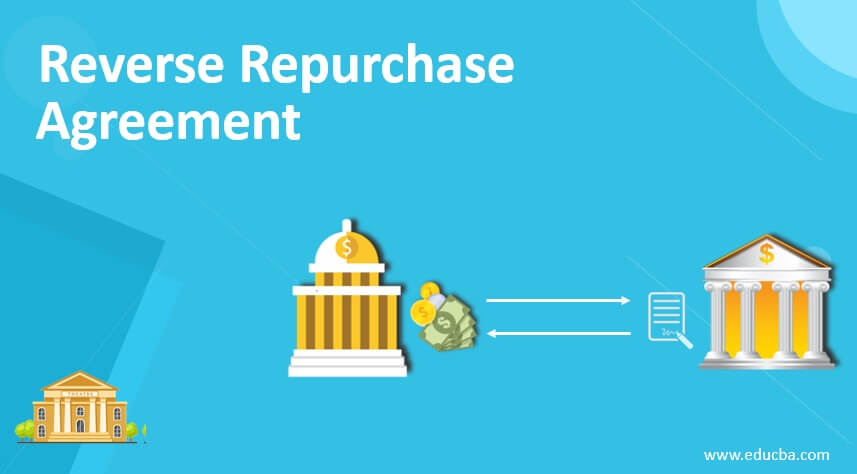Updated July 15, 2023
What is Reverse Repurchase Agreement?
The term “reverse repurchase agreement” refers to buying securities with the promise of selling them back at a higher price on a specified future date.
It is also popularly known as the “reverse repo” agreement. Effectively, the reverse repurchase agreement (reverse repo) from a buyer’s perspective is similar to the repurchase agreement (repo) from a seller’s perspective. In the US, the most common type of reverse repurchase agreement is the tri-party agreement.
Explanation
A transaction is considered a reverse repurchase agreement when a buyer purchases securities from a seller in exchange for cash and promises to sell them back to the seller at a higher rate on a specified date in the future. In short, the seller executes a repo transaction while the buyer executes a reverse one. Both repo and reverse repo are like short-term collateralized loans.
Purpose of Reverse Repurchase Agreement
It is very popular among financial institutions as it is easy and safe. The leading financial institutions, such as banks, hedge funds, and securities dealers, don’t prefer to maintain large amounts of cash; thus, they intend to invest all their funds in the market. So, when they have excess cash, they invest it in reverse repurchase agreements, and when they are in need of cash, they raise money using repurchase agreements. This is why financial institutions actively participate in the repo market.
How Does Reverse Repurchase Agreement Work?
Businesses like investors or lending institutions usually use reverse repurchase agreements to lend short-term loans to other businesses when they are in need of funds. Effectively, the lender purchases equipment, business asset, or shares of the borrower with the agreement to sell them back to the borrower for a higher price on a set future date. The difference between the buying and the higher selling prices represents the lender’s interest in the deal. The asset the lender (or buyer) purchases acts as the collateral to cover the default risk. Interestingly, there is no physical exchange of the collateral between the lender and the borrower until the borrower defaults.
Examples of Reverse Repurchase Agreements
Following are the example are given below:
Example #1
Suppose a buyer bought securities at $ 950 with collateral coverage of $1,200 in the transaction’s first leg. In the second leg, the buyer will sell the securities back to the seller at $1,000 and return the worth $1,200. Determine the interest earned by the buyer in this transaction.
In this transaction, the buyer earned $50 (= $1,000 – $950) in exchange for lending the money.
Example #2
Let us assume the central bank has fixed the US’s reverse repo rate at 6% annually. Determine the selling price of the securities that a commercial bank purchased for $950 for 28 days.
The interest to be earned in the agreement is $4.37 (= 6% * 28/365 * $950). So, the selling price will be $954.37 (= $950 + $4.37).
Components of Reverse Repurchase Agreement
The reverse repurchase agreement has all the legs of the agreement legally documented within the same contract. The first is the purchase of the underlying business asset by the lender (buyer), and the second leg involves selling the asset back to the borrower (seller). Further, the underlying asset serves as the collateral for the lending operation. However, there is no actual change of location or ownership of the collateral unless the borrower defaults, in which case the collateral has to be physically transferred to the lender.
Advantages
Some of the major advantages of RRA are as follows:
- It helps commercial banks earn an additional return on their excess cash, which can be handy in times of high inflation in the economy.
- It is a very important tool for the central banks to control the money supply in the economy. For instance, a high reverse repo rate helps inject liquidity into the economy.
- It is one of the safest avenues to hold investments as the borrowers are usually the central banks, who enjoy the government’s support. The banks earn profit by parking the excess cash with the central banks. However, the chances of default still exist, and it can’t be completely written off.
Disadvantages
Some of the major disadvantages of RRA are as follows:
- If the reverse repurchase transactions are executed on a larger scale, they may result in major banking disintermediation.
- Typically, the reverse repurchase agreement is not properly established with the entity’s counterparty.
- There is neither any judicial checking of the borrower’s financial health and the seller nor any assessment of the value of the collateral. The collateral may lose value owing to market volatility or changes in the market scenario.
Conclusion
So, it can be seen that the reverse repurchase agreement is a useful method to inject liquidity into a market. It ensures businesses don’t need to liquidate their investments due to unforeseen cash flow crises. It is also effectively used for managing cash. The central banks usually use the reverse repurchase agreement to control the money supply in the economy. Since it primarily involves buying and selling treasury securities, it is considered one of the safest forms of investment.
Recommended Articles
This is a guide to Reverse Repurchase Agreements. Here we also discuss the introduction and how reverse repurchase agreements work. Along with advantages and disadvantages. You may also have a look at the following articles to learn more –




